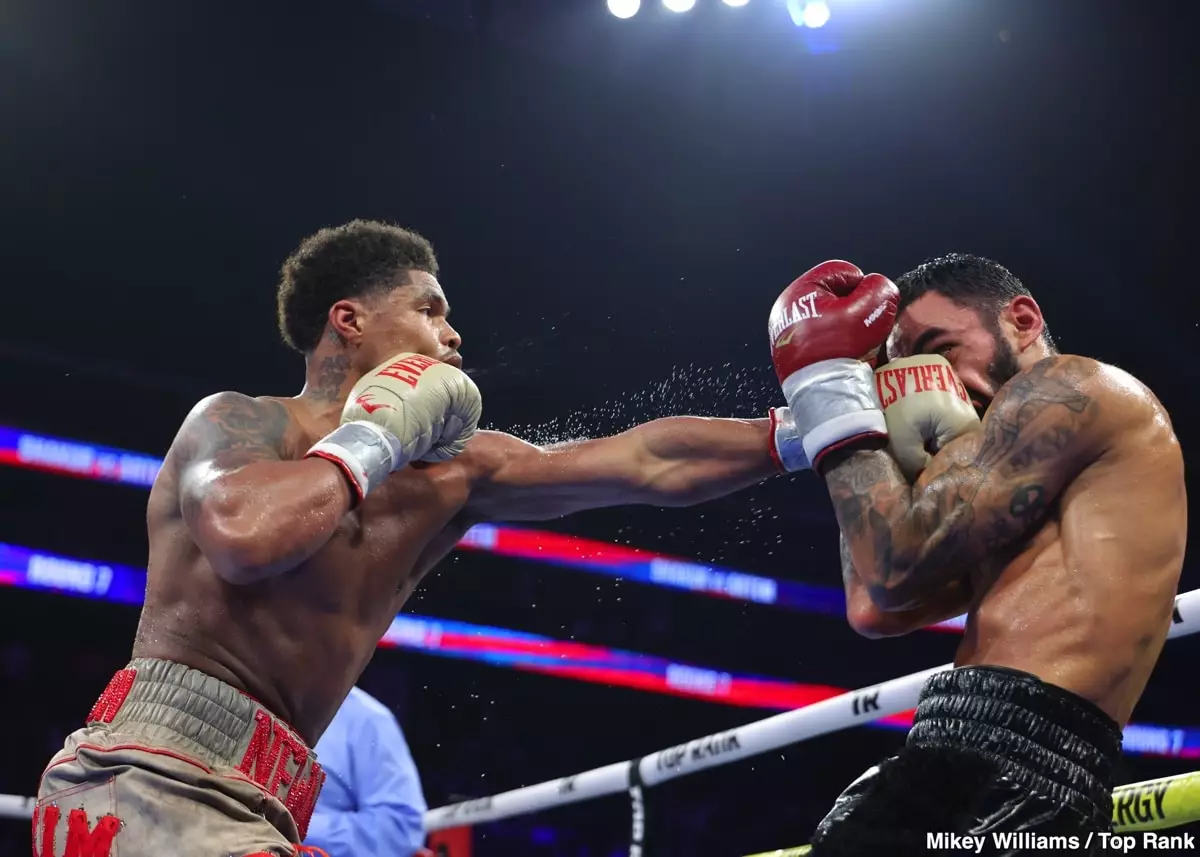As Shakur Stevenson approaches his title defense against emerging contender Floyd Schofield on February 22nd in Riyadh, expectations are high. Stevenson, who boasts an impressive record of 22 wins and 10 knockouts, has recently proclaimed that he is ready to unveil a ‘new version’ of his fighting style that promises to be a marked improvement over his previously established methods. This assertion raises questions about the potential for transformation in a fighter who has spent most of his career adhering to a cautious, hit-and-not-get-hit approach. With the stakes this high, fans and analysts alike are eager to see whether Stevenson can deliver on this bold promise.
Historically, fighters tend to solidify their styles as they approach their 30s. Given that Stevenson is nearing this landmark age, the notion that he can successfully reinvent his fighting approach within such a constrained timeline is ambitious. Traditionally, the hit-and-move strategy has served him well; however, the boxing audience—especially under the spotlight of promoter Turki Alalshikh—craves excitement. Stevenson runs the risk of falling out of favor if he continues to deliver lackluster performances. Schofield presents a formidable test and a chance for Stevenson to showcase a more thrilling iteration of himself, one that is unafraid to engage in exchanges.
One of the key factors in this upcoming match is the punching power of Floyd Schofield. At just 22 years old, Schofield is known for his explosive strikes, posing a significant threat to Stevenson if he does not adapt his style effectively. While Stevenson claims he has no fear of power and stood firm against Artem Harutyunyan, it is vital to note the context of that fight. Harutyunyan, who had just returned from a year-long layoff and was not considered a formidable puncher, provided a false sense of security. In contrast, Schofield is an entirely different opponent who could potentially expose the vulnerabilities in Stevenson’s established game plan.
The pressure on Stevenson is not merely from the boxing world but from the audience’s desire for entertainment. Fans are becoming increasingly vocal about their aversion to fighters who prioritize defense over aggression. While champions like Tyson Fury have managed to capture both the boxing and entertainment sectors through personality and unconventional tactics, Stevenson risks being pigeonholed into a reputation as a dull fighter unless he adapts. This shift in audience expectations underlines the urgency for Stevenson to invigorate his style and craft a more engaging presence inside the ring.
Shakur Stevenson stands at a significant crossroads. The impending fight against Floyd Schofield not only presents a challenge in terms of skill and strategy but also a pivotal moment for him to evolve both as a fighter and as an entertainer. His previous style brought him success, but the realm of boxing is unforgiving, especially when it comes to fan engagement. To embrace this ‘new version’ of himself, Stevenson must blend his defensive prowess with a newfound willingness to take risks, ultimately redefining his legacy and the excitement he brings to the sport. Only time will tell if he can rise to the occasion and convince not just his critics, but also his fans that a thrilling new era is upon him.


Leave a Reply